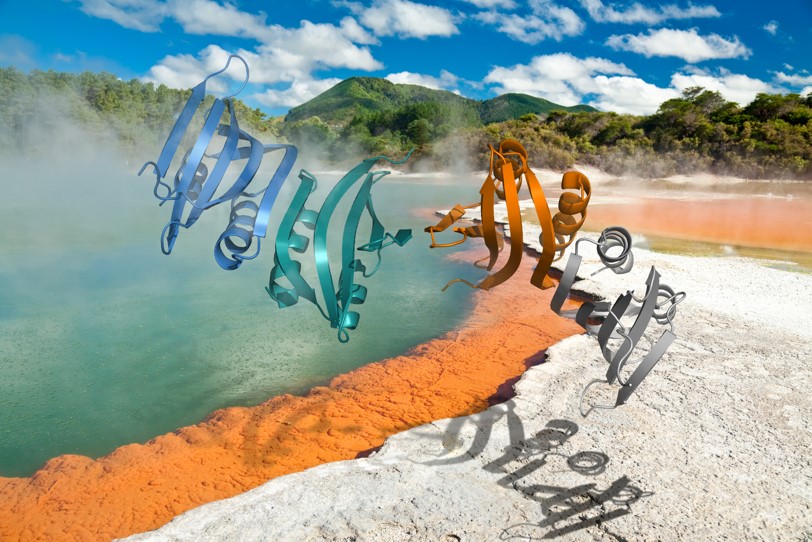Arms race among microbes
The hot, muddy pools of Iceland are home to a number of simple, single-celled organisms, and new research shows that they also constitute a true biological battlefield and the basis for an arms race of unprecedented magnitude. The new knowledge about the struggle between living organisms in hot pools gives us a much better understanding of how microorganisms survive when exposed to stress, information which could be used for the development of future drugs.

There are living organisms in virtually every corner of the Earth – from the coldest parts of Antarctica to hot deserts and boiling volcanic pools. And right there, in the hot, muddy pools of Iceland, researchers from Aarhus University have just made a remarkable discovery in close collaboration with researchers from the University of Copenhagen and the National Institutes of Health, USA. It has been known for a long time that these hot pools were home to a number of simple, single-celled organisms called archaea, which have the unusual property that they thrive at temperatures between 80 degrees and the boiling point. But now, new research demonstrates that this inhospitable habitat also constitutes a true biological battlefield and the basis for an arms race of unprecedented magnitude.
Microscopic and very primitive DNA viruses, the so-called rudiviruses, constantly attack archaea of the Sulfolobus genus by attempting to penetrate their cell membranes and infect them. To circumvent this, Sulfolobus has developed a so-called CRISPR-Cas defence that enables them to "remember" viral DNA that they have previously encountered, which they use in a targeted counter-attack to break down the viral DNA breaks down before it can cause any harm.
This defence mechanism is widely conserved in both bacteria and archaea, and intense research over the past 10 years has helped reveal the basic molecular principles underlying CRISPR-Cas immunity and demonstrate that these systems harbour unmatched opportunities for gene manipulation, both in the biotechnology laboratory and in the field of modern gene medicine.
But there is always a catch and the research into the hot Icelandic pools has now revealed that the rudiviruses have been able to develop a counter-attack against the CRISPR-Cas system of Sulfolobus, a protein molecule that specifically binds and blocks the molecular components as a stick in the wheel before they can prevent the virus attack. This is the first time that such an anti-CRISPR component has been identified in archaea and the new results – which include the determination of the three-dimensional structure of the anti-CRISPR protein itself – can help us gain a much better understanding of the extent of the constant arms race that takes place between living organisms in all Earth's habitats.
In the longer run, knowledge about such heat-resistant CRISPR-Cas enzymes and their adversaries, the anti-CRISPR proteins can be utilised in biotechnology and drug development for the production of novel antimicrobial drugs.
The article "Anti-CRISPR proteins encoded by archaeal lytic viruses inhibit subtype I-D immunity" was published in the internationally recognised journal Nature Microbiology.
The Ditlev E. Brodersen lab focuses on understanding microbial defence mechanisms that allow e.g. pathogenic bacteria to survive even in the presence of antibiotics or when encountering viruses. These mechanisms include, apart from CRISPR-Cas, also so-called toxin-antitoxin systems, which can be activated during cellular stress and cause the bacteria to go into a state of hibernation where they are much less sensitive towards antibiotics. The lab uses biochemical and structural methods to understand the fundamental, molecular basis of the defence mechanisms.
For more information, see www.bioxray.au.dk/~deb
For further information, please contact
Associate Professor Ditlev E. Brodersen
Department of Molecular Biology and Genetics
Aarhus University, Denmark
Tel. +45 21669001 - E-mail deb@mbg.au.dk
Associate professor Xu Peng
Department of Biology
University of Copenhagen, Denmark
Tel. 35322018 - E-mail peng@bio.ku.dk
